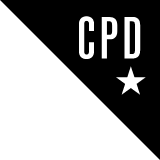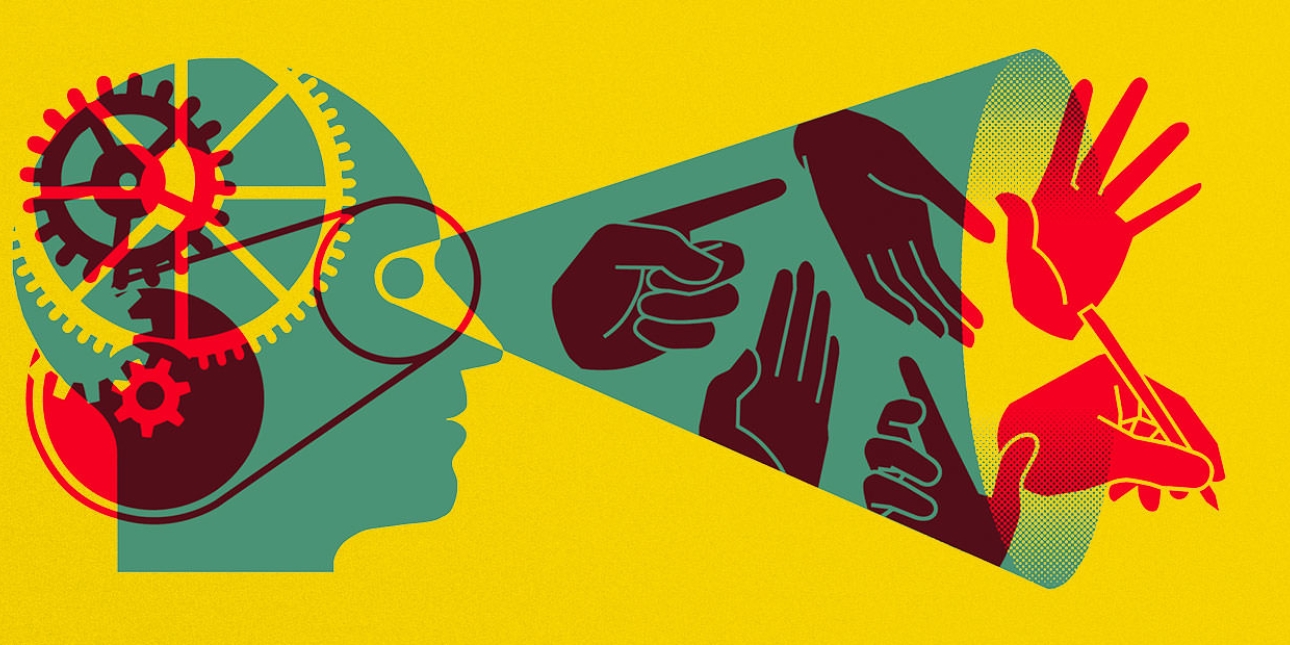Plus ça Change
The COVID-19 pandemic has only accelerated existing trends, argues Rod Cartwright, who says that modern crisis preparedness doesn’t just invite risk management, it demands systematic change.
If the world before 2020 felt issues-rich and crisis-heavy, the global pandemic has raised the risk stakes for professional communicators even further. COVID-19 has, at times, felt all-consuming, impacting every element of our personal and professional lives, dominating every news cycle and introducing permanent uncertainty into how we live day-to-day.
However, as governments and societies around the world tentatively edge their way towards ‘living with COVID’, we also need to keep the pandemic in perspective when it comes to the identification, mitigation and management of organisational, reputational and relational risk.
To be clear, that statement is not meant to lessen or belittle in any way the 73 million COVID cases still active and the 5.7 million deaths to date. Every single fatal or life-changing case has brought with it an immeasurable human cost.
However, for those in the issues management and crisis communication sphere, it is important to step back and be truly objective in balancing pandemic-related reputational risks with dynamics already in play before the world was upended at the start of 2020. So, what does that mean in practice?
Today’s high-impact crisis communicator needs to adopt an approach which is truly systematic, measurable, risk-led and scenario-based. Managing reputational risk in 2022 demands a mindset which draws on a genuine understanding of the organisation’s strategy, operations, financials and societal context. At the same time, next-generation issues management and crisis communication needs to focus as much on human preparedness and the ‘human imperative’ as on systems, processes and protocols. Let me explain and expand.

The post-COVID expectation tsunami
Over the past two years, many have argued that COVID-19 has created a whole new world. The ‘before time’, they argue, is just a distant memory and the world has changed forever. As seismic as the pandemic may have been in so many ways, I just don’t buy that argument.
If you look at the findings of the World Economic Forum's Latest Global Risks Report, the top three risks (and five of the top eight) over the next decade – ranked by severity – are environment-related, with infectious diseases coming in at number six.
COVID-19 has certainly made its human presence felt on the risk landscape – “social cohesion erosion” and “livelihood crises” top the list of risks worsened since the start of the pandemic, with “mental health deterioration” at number four. However, from an overall risk perspective, the pandemic has not been as all-conquering as it may first appear.
In reality, the global pandemic has simply accelerated multiple existing trends and amplified a range of dynamics already making their presence felt before the pandemic struck.
Organisations across the private, public and non-profit sectors are now facing an ‘expectation tsunami’, spanning the entire stakeholder arena – from employees, investors and customers to communities, suppliers and partners.
Whether it is diversity and inclusion, mental health and wellbeing, and hybrid working or corporate transparency, accountability and governance, the reputation risk environment for crisis communicators has become more complex than ever.
However, this expectation tsunami has not been created by the pandemic – it has simply been accelerated by it, with its amplitude and momentum increased by the events of the past two years.
After all, the rise of ESG and integrated reporting was already in full flow before the pandemic – just look at Blackrock CEO, Larry Fink's annual letter to shareholders sent every year since 2012 or the 2019 Statement on the Purpose of a Corporation by the Business Roundtable.
The pincer movement of ESG (giving a far harder edge to corporate responsibility and purpose) and the expectation tsunami (intensifying the internal and external scrutiny of corporate behaviour) may have created a reputational risk environment of unprecedented complexity for professional communicators. But COVID has been a contributor not the cause.
Equally, the pandemic has neither increased the number of stakeholders organisations now have to deal with nor their social media–powered inter-connectedness, interaction and cross-fertilisation – already the bane of many a reputation manager well before the pandemic hit.

The communication response: key ingredients
What should the focus of corporate and crisis communicators be in 2022 and beyond? The starting point is to remember the origins and true meaning of the term ‘crisis’ itself. The word is invariably viewed as an end point – an organisational disaster or corporate catastrophe.
In reality, its original meaning in Greek was a ‘decision’ or choice’, first used in English as the point in a disease at which the patient either recovers or deteriorates further. In short, a crisis is only ever a turning-point or point of inflection.
Research by Oxford Metrica into the business impact of mass fatality events found that organisations seen to have handled a crisis poorly saw an average hit to their share price of 15% in the following six months. Those judged to have responded well, actually saw a net stock price uptick of 5% over the same period. No coincidence, then, that the Chinese symbol for crisis is made up of the symbols for danger and opportunity. Remember that a crisis can be as rich in reputational opportunity as it is fraught with risk.
At the same time, professional communicators need to focus ever more forensically on overall organisational risk and operational resilience – not just on communications and reputational jeopardy. I often say that there is no such thing as a ‘PR crisis’: 99% of reputational crises are caused by a combination of operational, structural, governance, leadership and cultural considerations.
So whether you are an in-house communicator or external advisor, make sure that your work on risk is grounded in a true operational and financial understanding of the organisation you serve, while also reflecting the organisation’s fundamental purpose, values and cultural context.
Crisis communicators also need to consider both reputational and relational risk. Public relations is, after all, ultimately about human relationships. So while it is naturally critical to know what stakeholders understand, think and feel about your organisation in a crisis situation (reputational risk), it is every bit as important to focus on how those stakeholders will act and behave as a result of those perceptions (relational risk).
Taken together, these dynamics require a crisis communication mindset focused as much on human preparedness and the ‘human imperative’ (both internally and externally) as it is on systems, processes and infrastructure.
At the end of the day, crises are human events, with human consequences, requiring a human response. The severity and duration of the damage caused by a crisis is fundamentally determined by stakeholders’ visceral, emotional reactions: the extent to which their values of fairness, justice, decency and ‘doing the right thing’ have been offended. A systems-only approach will never sufficiently consider the human imperative to deal with the full human ramifications of a reputational crisis.
Are you ready?
The ICCO World PR Report 2020-2021 saw demand for crisis counsel grow faster during the pandemic than any other discipline. Strategic consulting and corporate reputation topped the list of expected growth areas over the next five years, with crisis counsel viewed as a key future skill.
In response, the CIPR has launched a new Crisis Communication Network and I’m delighted to be serving as its Special Advisor. With a thriving events programme already underway, the Network is an open and inclusive forum where CIPR professionals globally can share crisis communications best practice. We are here to help members explore lessons from crisis case studies and learn about the latest academic and real-world thinking in reputation risk management.
Full-blooded reputation risk management now sits at the heart of the modern communication function in any forward-thinking organisation. As the industry gears up to respond, how ready are you? The answer lies in your answers to the following questions:
- Is your crisis communication ethos and approach informed by the true meaning of ‘crisis’?
- Can you demonstrate a genuine understanding of your organisation’s strategy, operations, financials and societal context?
- Have you truly assessed the ramifications of the expectation tsunami and mapped its impact on your whole stakeholder web?
- Is your focus on overall, integrated organisational risk and operational resilience, rather than just on communication and reputational jeopardy?
- Have you identified and analysed your reputational and relational risk landscape?
- Is your crisis communication planning truly systematic, measurable, risk-led and scenario-based?
- Are you focused as much on human preparedness and the ‘human imperative’ as on your systems, processes and protocols?
As you gear up for the challenges of 2022 and beyond, be honest in your answers to these questions, arm yourself with the right skills and capabilities, and get yourself ready for the only constant in reputation management – CHANGE.
1482 Words
Rod Cartwright is the Principal of Rod Cartwright Consulting, a strategic communication consultancy focused on human preparedness, organisation resilience and business performance. He is Special Advisor to the CIPR's Crisis Communications Network and Chair of the EACD's Crisis & Risk Communication Expert Group.


